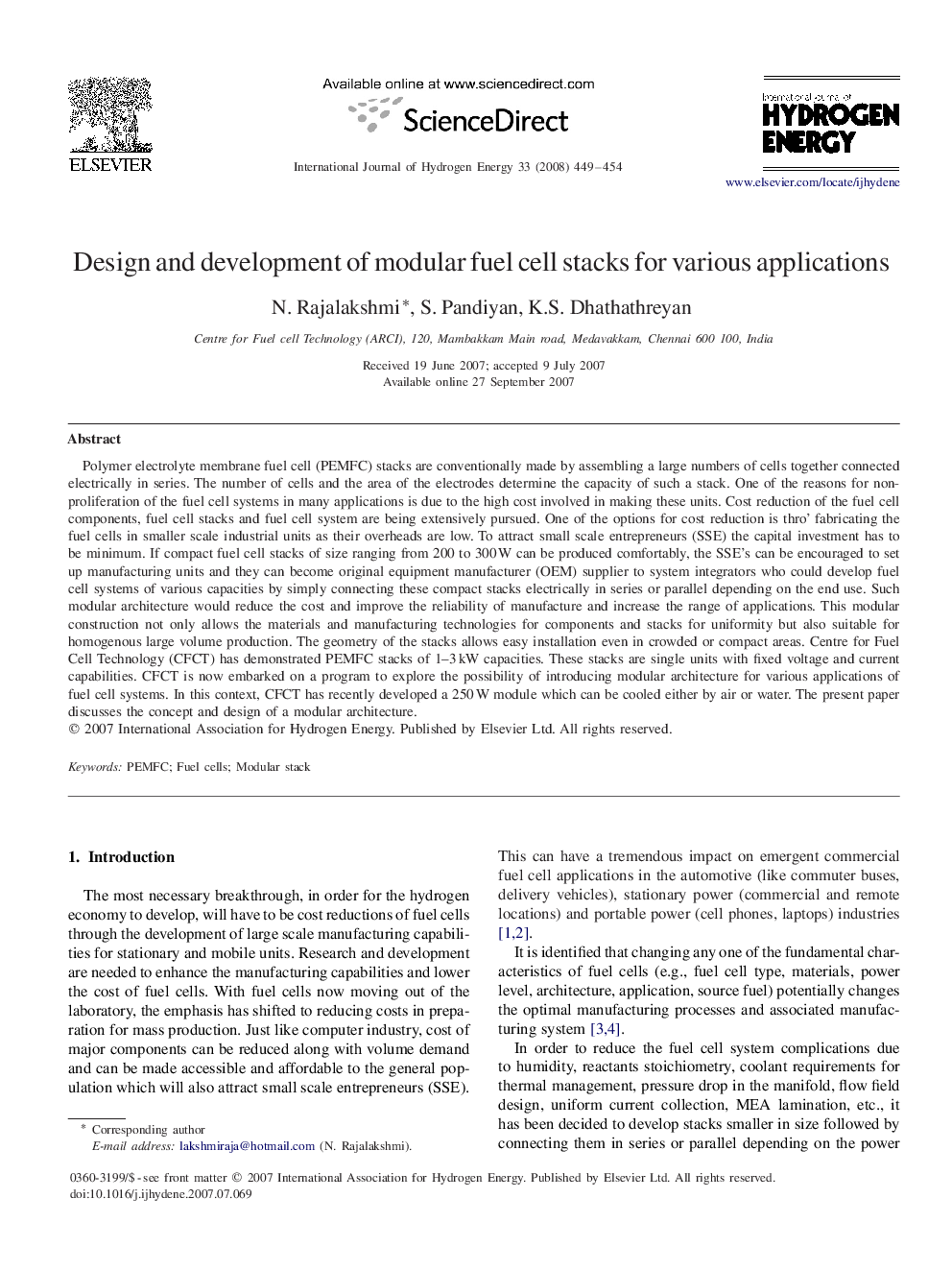| Article ID | Journal | Published Year | Pages | File Type |
|---|---|---|---|---|
| 1279490 | International Journal of Hydrogen Energy | 2008 | 6 Pages |
Polymer electrolyte membrane fuel cell (PEMFC) stacks are conventionally made by assembling a large numbers of cells together connected electrically in series. The number of cells and the area of the electrodes determine the capacity of such a stack. One of the reasons for non-proliferation of the fuel cell systems in many applications is due to the high cost involved in making these units. Cost reduction of the fuel cell components, fuel cell stacks and fuel cell system are being extensively pursued. One of the options for cost reduction is thro’ fabricating the fuel cells in smaller scale industrial units as their overheads are low. To attract small scale entrepreneurs (SSE) the capital investment has to be minimum. If compact fuel cell stacks of size ranging from 200 to 300 W can be produced comfortably, the SSE's can be encouraged to set up manufacturing units and they can become original equipment manufacturer (OEM) supplier to system integrators who could develop fuel cell systems of various capacities by simply connecting these compact stacks electrically in series or parallel depending on the end use. Such modular architecture would reduce the cost and improve the reliability of manufacture and increase the range of applications. This modular construction not only allows the materials and manufacturing technologies for components and stacks for uniformity but also suitable for homogenous large volume production. The geometry of the stacks allows easy installation even in crowded or compact areas. Centre for Fuel Cell Technology (CFCT) has demonstrated PEMFC stacks of 1–3 kW capacities. These stacks are single units with fixed voltage and current capabilities. CFCT is now embarked on a program to explore the possibility of introducing modular architecture for various applications of fuel cell systems. In this context, CFCT has recently developed a 250 W module which can be cooled either by air or water. The present paper discusses the concept and design of a modular architecture.
